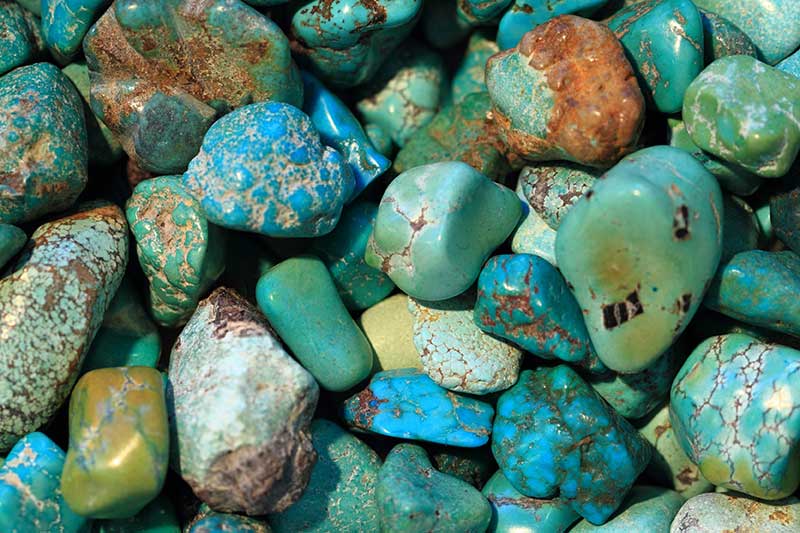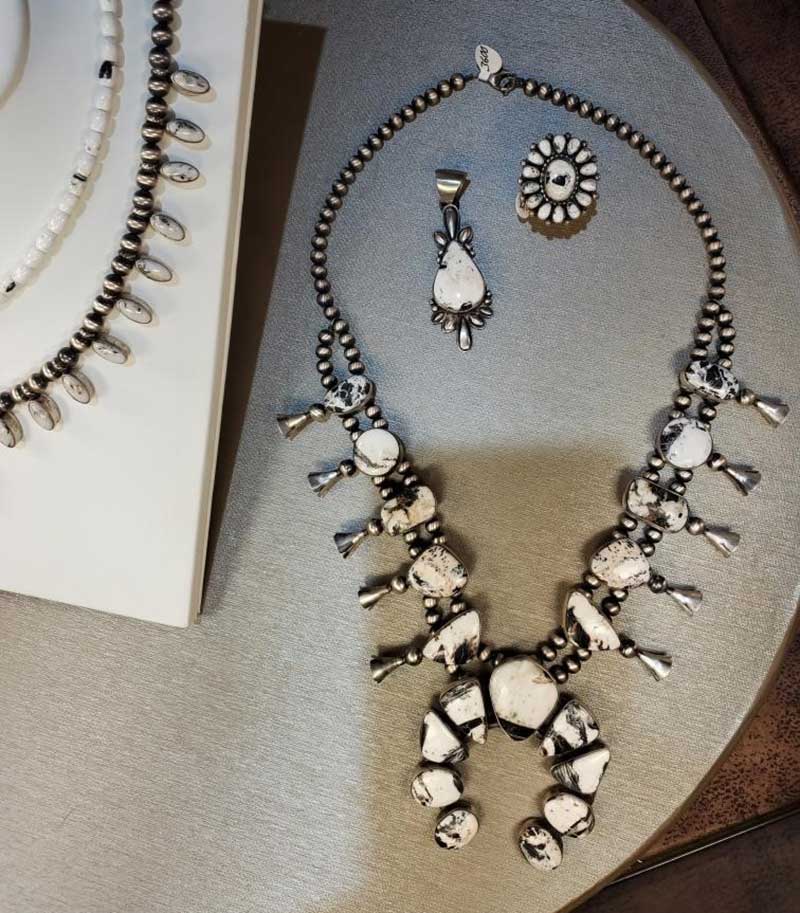
Assorted Turquoise Gemstones
Turquoise: Nevada’s Magnificent Gem
BY BETH ILAGAN
Turquoise is a beautiful blue to gray mineral consisting of copper aluminum phosphate. The copper gives the mineral its blue coloring, while iron gives it a greenish color. If the mineral contains zinc, a yellowish hue is produced. This mineral is formed by a chemical reaction, which occurs when water containing specific minerals leak through a rock. It forms veins in the rock, which later turn into clumps of turquoise. Its formation depends on the ever-evolving weathering of rock formations to produce its intense stunning wide range of colors, matrix patterning, and spiderweb. Some people believe the turquoise gemstone in history to be a holy stone that can dispel negative energy and protect its wearer from harm. It represents wisdom, tranquility, good fortune, hope, and enduring love. The brightness of the stone symbolizes happiness and is believed to increase a person’s self-confidence. It is the December birthstone.
Evidence shows that turquoise mining started in Nevada by the pre-historic Native Americans around 1000 A.D. In the past, there were more than 400 registered turquoise mining claims in Nevada, run by “Ma & Pa” operations. Now, there are at least 72 turquoise mines in Nevada, the most popular being the Royston Mine and the Lone Mountain Mine.
The Royston mine is in the Great Basin Desert near the town of Tonopah. It produces some of the best quality stones globally, with a natural hardness of 5-6 on the Mohs scale. They are known to produce stones of vibrant blue, green, and brown colors that swirl in a dizzying matrix. They also have the much rarer White Buffalo turquoise. These stones are so famous worldwide that buyers, artists, and jewelry manufacturers come from all over the world to purchase these stones. At present, Royston mine is the largest turquoise producer in the world! They also sell turquoise stones on Instagram. This mine has been continuously operating for at least 60 years, managed by three generations of the Otteson family. You can watch the documentary series entitled “Turquoise Fever” on Netflix and INSP, featuring the saga of the Otteson family as they mine for the elusive turquoise. Pre-pandemic, turquoise mine tours were available for visitors and rockhounds. Tours usually depart from the Giggles Gas Station in Tonopah.

Tonopah Trading Company
The Lone Mountain mine was started in 1920 by Lee Hand in Esmeralda County, Nevada. This mine is famous for its turquoise’s ability to keep its color and not fade. These stones were traded or sold to Native American jewelry traders in New Mexico, who turned them into some of the most exquisite silver and turquoise jewelry pieces. The stones are typically clear blue to a grayish-blue or a spider web pattern.
In my search for the ultimate Nevada-mined turquoise ring, I ended up taking a lazy five-hour trip by car to Tonopah, Nevada. Due to on-going road construction, the trip was longer than expected. When I finally reached Tonopah, I found out that there were three places where turquoise jewelry was sold pre-pandemic. At present, only one remains—”Tonopah Trading Company,” located at 363 South Main Street, Tonopah NV 89049.
This jewelry store is owned and operated by husband and wife, Gary and Terri Godfrey. Terri was accommodating enough to show me the various jewelry designs featuring multiple colors, both in gold and silver settings—some stones mined by Gary and designed in jewelry by Terri. They also carry turquoise jewelry made by other artists that come in both traditional and contemporary designs.
I invite you on an adventure trip to Tonopah, Nevada, to experience and revel in the richness of one of our state’s natural resources—turquoise! Who knows, you might even catch the turquoise fever!







